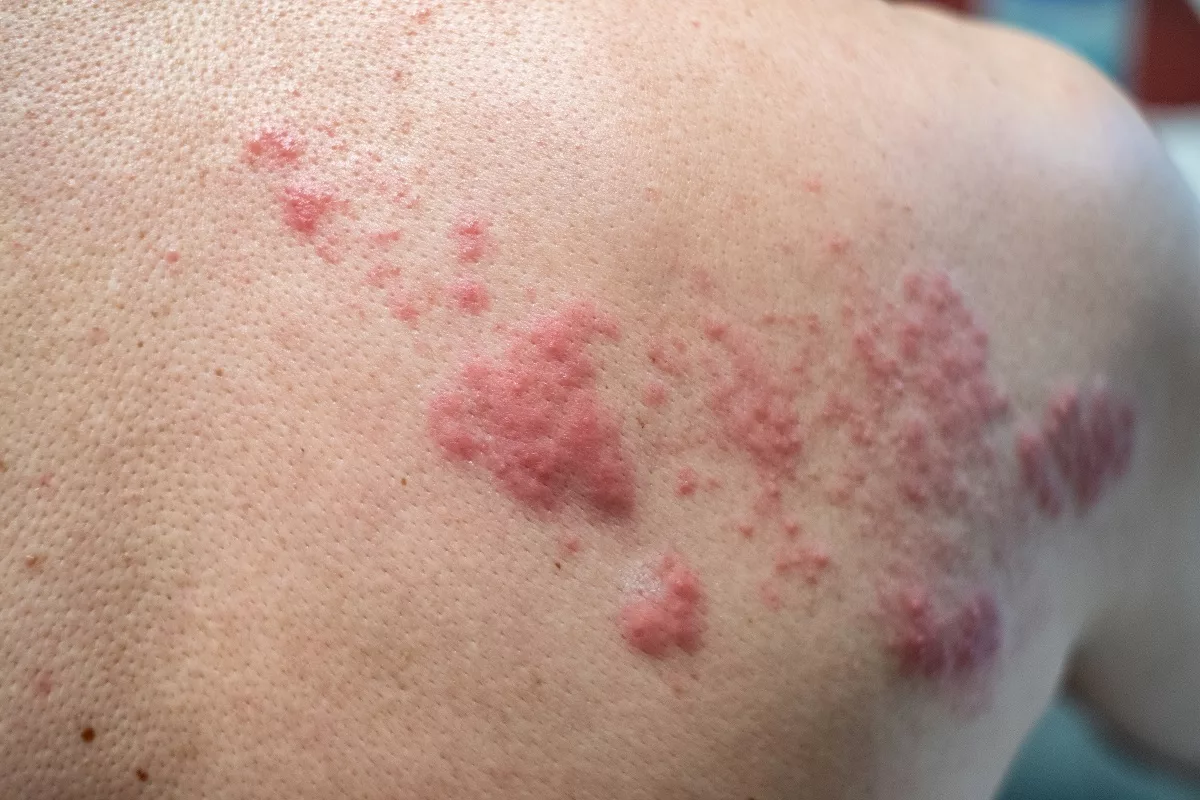A bacterial infection that causes a bumpy and rough rash over almost all of the body is called scarlet fever. This condition occurs due to a bacterium (strep A) that may also cause strep throat and other skin infections. In most cases, people develop this disorder within several days of a sore throat, fever, or other symptoms. However, it can be treated with antibiotics. People who ignore the symptoms and do not get treatment may experience serious complications.
Symptoms
Those who suffer from this bacterial infection may experience the following symptoms. Examples include:
- Myalgia (body aches)
- Headaches
- Fever
- Sore throat
- Nausea
- Vomiting
- Stomach pain
- Tiredness
- Strawberry tongue
- Swollen lymph nodes or tonsils
- Red spots on the roof of the mouth
- Impetigo (itchy and red sores that may turn to scabs)
If you notice any of the previous symptoms, immediately see a doctor.
Causes
This infection occurs due to group A Streptococcus (strep A) bacteria. Furthermore, the same bacteria may cause other health problems, including impetigo, strep throat, and other skin infections. However, not everyone who gets this bacteria develops infections.
You may wonder if this condition is contagious. Yes, the bacteria that cause scarlet fever may spread from one person to another. Usually, bacteria spread to other people when an infected person coughs or sneezes. They can get infected if they:
- Touch contaminated surfaces and then touch their nose, eyes, or mouth
- Breathe in the droplets
- Share drinks or food with an infected person
- Kiss an infected individual
- Touch open sores that contain this bacterium
In rare cases, people may develop scarlet fever when eating contaminated food or drinks.
Risk Factors
In general, children from 5 to 15 years old are at higher risk of developing this bacterial infection. However, healthcare providers are not sure why some people develop a rash from strep A while others do not. The risk of scarlet fever also increases if you work or live in close contact with others. Check below some factors that could significantly increase the risk of developing scarlet fever:
- A weakened immune system caused by certain medicines or health conditions
- Open wounds
- Skin disease
- You are a Native American or Alaska Native descent
- Inject drugs
- Older people (over 65 years old or older)
- Homelessness
- Chronic health conditions (including cancer, kidney, heart, or lung disease, diabetes, and others)
What Are The Possible Complications of Scarlet Fever?
Those who develop scarlet fever may also experience some complications, especially if they do not get treatment as soon as possible. Check below some examples:
- Ear, sinus, or skin infections
- Arthritis
- Osteomyelitis (bone infection)
- Abscesses around the tonsils or the brain
- Mastoiditis
- Kidney damage
- Meningitis
- Necrotizing fasciitis
- PANDAS (pediatric autoimmune neuropsychiatric disorder associated with streptococcus)
- Rheumatic fever
- Pneumonia
- Sepsis
- Septicemia
- Toxic shock syndrome
- Death
This document does not contain all possible complications of this disorder.
How to Prevent Scarlet Fever?
While it is difficult to prevent this condition, you can take steps to reduce the risk. For example:
- Regularly wash your hands with soap and warm water
- Do not share your items, such as toothbrushes or eating utensils
- If water is not available, it is recommended to use alcohol-based sanitizers
- Cover your mouth and nose when coughing or sneezing
- Avoid infected people
Diagnosis
Usually, this bacterial infection is diagnosed during a physical examination and a strep test. During this procedure, doctors will swab your throat with a stick to test it for the bacteria that cause scarlet fever.
Treatment
Usually, this condition is treated with antibiotics, including Amoxicillin, Erythromycin, Clindamycin, or Azithromycin. These antibiotics may come in a pill or liquid form that should be taken for roughly 10 days. Commonly, the rash caused by this bacterial infection lasts for roughly 7 days, but the skin may continue to peel for several weeks as it heals. Some people may also have swollen lymph nodes for a few weeks after treatment.
Home Remedies
Check below some options that may help improve the symptoms while antibiotics do their job:
- Over-the-counter (OTC) pain relievers, including Acetaminophen, Ibuprofen, and others
- Anti-itch creams (such as 1% hydrocortisone or calamine lotion)
- Gargling with salt water
- Eat soft foods and liquids (including soups, scrambled eggs, or popsicles)
Frequently Asked Questions
What does the scarlet fever rash look like?
The rash caused by scarlet fever is often made up of small and rough bumps that may feel like sandpaper. They are usually red or pink if your skin is light, but if you have darker skin, these bumps may look different or even difficult to see. In most cases, this rash spreads in stages. For example:
- First, it appears on the neck and chest
- Thereafter, it may spread to the back, arms, legs, and face
- Commonly, the skin peels a few weeks after treatment, especially on the fingertips
How long is a person contagious with scarlet fever?
People who are infected with this bacterium are contagious 24 hours after taking the first dose of antibiotics. Those who do not get treatment are contagious for several weeks after the first symptoms appear.
What can be mistaken for scarlet fever?
There are some health conditions that can be mistaken for scarlet fever. Check below some examples:
- Viral exanthems (viral rashes)
- Kawasaki disease
- Toxic shock syndrome
- Guttate psoriasis
- Rubella
- Fifth disease (also called slapped cheek disease)
- Roseola
- Mononucleosis
This article does not have a full list of conditions that could be mistaken for scarlet fever. That’s why it is important to see a doctor for diagnosis if you experience previous symptoms. If you have any other questions, ask your healthcare professional.




